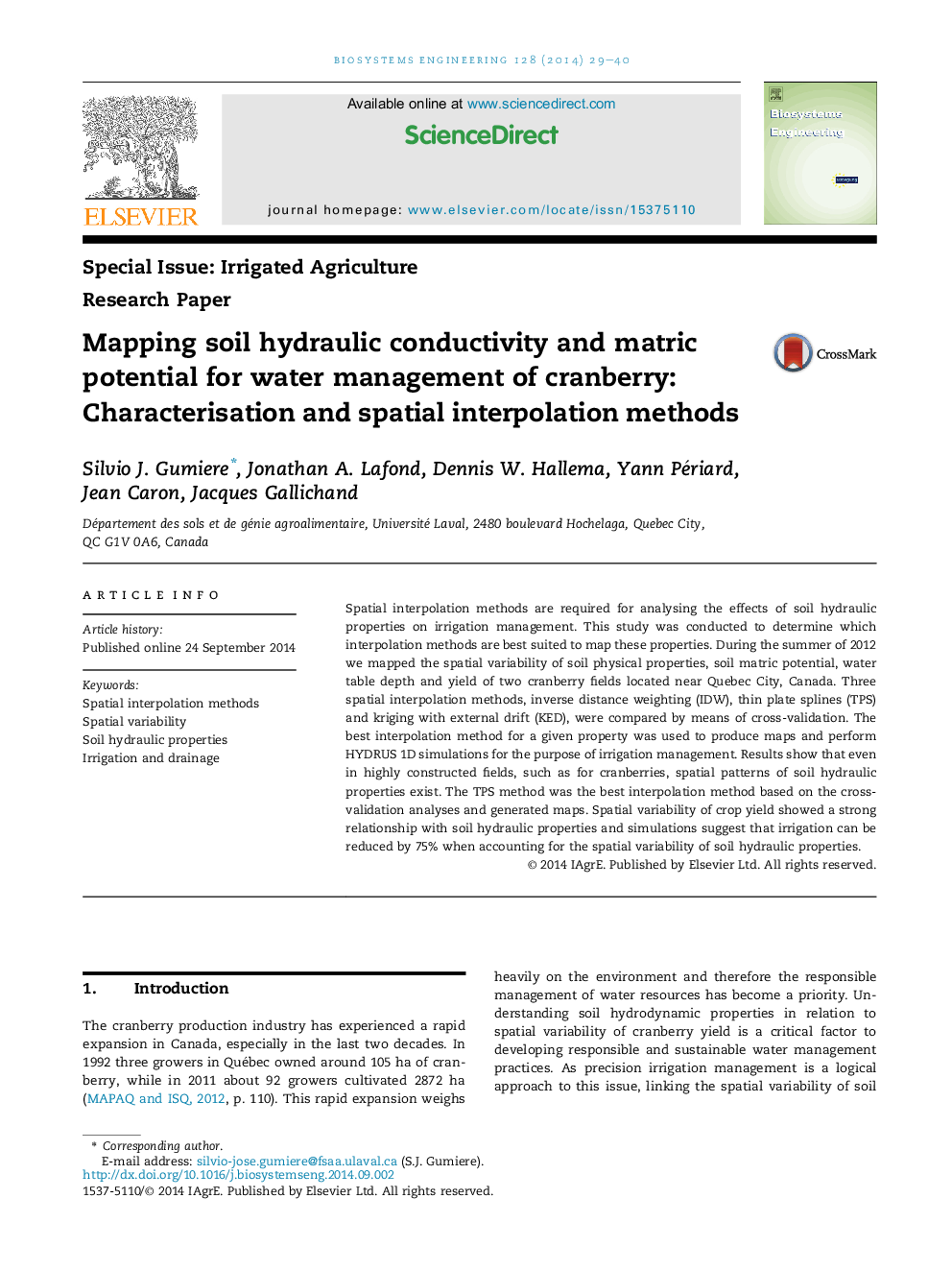| Article ID | Journal | Published Year | Pages | File Type |
|---|---|---|---|---|
| 1711089 | Biosystems Engineering | 2014 | 12 Pages |
•Spatial variability of soil properties, water status and crop yield characterised.•Inverse distance weighting, thin plate splines and kriging + external drift used.•Irrigation management evaluated using HYDRUS 1D on map of soil properties.•Cross-validation analyses and maps indicated that TPS was best interpolation method.
Spatial interpolation methods are required for analysing the effects of soil hydraulic properties on irrigation management. This study was conducted to determine which interpolation methods are best suited to map these properties. During the summer of 2012 we mapped the spatial variability of soil physical properties, soil matric potential, water table depth and yield of two cranberry fields located near Quebec City, Canada. Three spatial interpolation methods, inverse distance weighting (IDW), thin plate splines (TPS) and kriging with external drift (KED), were compared by means of cross-validation. The best interpolation method for a given property was used to produce maps and perform HYDRUS 1D simulations for the purpose of irrigation management. Results show that even in highly constructed fields, such as for cranberries, spatial patterns of soil hydraulic properties exist. The TPS method was the best interpolation method based on the cross-validation analyses and generated maps. Spatial variability of crop yield showed a strong relationship with soil hydraulic properties and simulations suggest that irrigation can be reduced by 75% when accounting for the spatial variability of soil hydraulic properties.
